Volume 2, Issue 1
Displaying 1-23 of 23 articles from this issue
- |<
- <
- 1
- >
- >|
-
2011Volume 2Issue 1 Pages 3-10
Published: June 01, 2011
Released on J-STAGE: March 01, 2023
Download PDF (727K) -
2011Volume 2Issue 1 Pages 11-18
Published: June 01, 2011
Released on J-STAGE: March 01, 2023
Download PDF (1709K) -
2011Volume 2Issue 1 Pages 19-24
Published: June 01, 2011
Released on J-STAGE: March 01, 2023
Download PDF (1236K) -
2011Volume 2Issue 1 Pages 25-30
Published: June 01, 2011
Released on J-STAGE: March 01, 2023
Download PDF (1070K) -
2011Volume 2Issue 1 Pages 31-38
Published: June 01, 2011
Released on J-STAGE: March 01, 2023
Download PDF (468K) -
2011Volume 2Issue 1 Pages 39-46
Published: June 01, 2011
Released on J-STAGE: March 01, 2023
Download PDF (1276K) -
2011Volume 2Issue 1 Pages 47-51
Published: June 01, 2011
Released on J-STAGE: March 01, 2023
Download PDF (428K) -
2011Volume 2Issue 1 Pages 52-60
Published: June 01, 2011
Released on J-STAGE: March 01, 2023
Download PDF (931K) -
2011Volume 2Issue 1 Pages 61-65
Published: June 01, 2011
Released on J-STAGE: March 01, 2023
Download PDF (600K) -
2011Volume 2Issue 1 Pages 66-70
Published: June 01, 2011
Released on J-STAGE: March 01, 2023
Download PDF (772K) -
2011Volume 2Issue 1 Pages 71-74
Published: June 01, 2011
Released on J-STAGE: March 01, 2023
Download PDF (413K)
-
2011Volume 2Issue 1 Pages 75-80
Published: June 01, 2011
Released on J-STAGE: March 01, 2023
Download PDF (734K) -
2011Volume 2Issue 1 Pages 81-86
Published: June 01, 2011
Released on J-STAGE: March 01, 2023
Download PDF (544K) -
2011Volume 2Issue 1 Pages 87-91
Published: June 01, 2011
Released on J-STAGE: March 01, 2023
Download PDF (527K)
-
2011Volume 2Issue 1 Pages 92-96
Published: June 01, 2011
Released on J-STAGE: March 01, 2023
Download PDF (471K) -
2011Volume 2Issue 1 Pages 97-103
Published: June 01, 2011
Released on J-STAGE: March 01, 2023
Download PDF (1178K)
-
2011Volume 2Issue 1 Pages 104-109
Published: June 01, 2011
Released on J-STAGE: March 01, 2023
Download PDF (1427K) -
2011Volume 2Issue 1 Pages 110-117
Published: June 01, 2011
Released on J-STAGE: March 01, 2023
Download PDF (764K)
-
2011Volume 2Issue 1 Pages 118-121
Published: June 01, 2011
Released on J-STAGE: March 01, 2023
Download PDF (720K) -
2011Volume 2Issue 1 Pages 122-126
Published: June 01, 2011
Released on J-STAGE: March 01, 2023
Download PDF (522K) -
2011Volume 2Issue 1 Pages 127-130
Published: June 01, 2011
Released on J-STAGE: March 01, 2023
Download PDF (403K) -
2011Volume 2Issue 1 Pages 131-135
Published: June 01, 2011
Released on J-STAGE: March 01, 2023
Download PDF (535K) -
2011Volume 2Issue 1 Pages 136-140
Published: June 01, 2011
Released on J-STAGE: March 01, 2023
Download PDF (679K)
- |<
- <
- 1
- >
- >|
